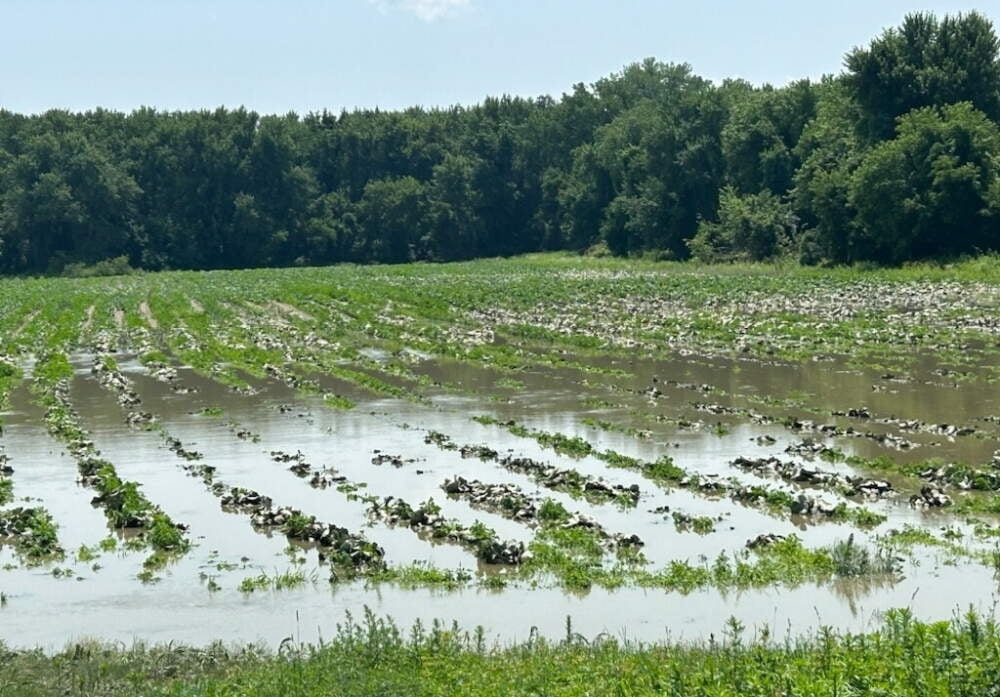El Niño, a climate phenomenon characterized by the periodic warming of sea surface temperatures in the central and eastern tropical Pacific Ocean, has far-reaching effects on weather patterns worldwide. Among these effects are El Niño rains, which can bring increased and erratic precipitation to many regions. While this can be a boom for agriculture, it also poses risks such as flooding, erosion and crop damage. Farmers must be proactive and well-prepared to navigate these challenges.
For farmers to stay prepared and ready for the weather changes, they ought to use these strategies.
1. Monitor Weather Forecasts and Stay Informed
The first step in preparing for El Niño rains is staying informed. Government agencies, meteorological services, and international organizations often provide early warnings and predictions regarding El Niño events. Stay updated about the expected duration and intensity of El Niño in your region, as this information will guide your preparations.
Kenyan farmers can stay updated by watching out for updates from the meteorological centre.

A flooded farm due to El Niño
2. Assess Vulnerabilities
Conduct a thorough assessment of your farm's vulnerabilities. Identify low-lying areas prone to flooding, weak soil structures, and crops that are most vulnerable. This evaluation will help you allocate resources and prioritize your preparations effectively.
Here are crops which can be highly affected by flooding.
- Rice: Submerged rice plants can experience reduced photosynthesis and oxygen deprivation, leading to decreased yields.
- Wheat: Wheat is sensitive to waterlogged conditions, and extended flooding can cause root rot and nutrient deficiency, leading to stunted growth and decreased grain production.
- Soybeans: Waterlogged soil can cause root damage, inhibit nutrient uptake and reduce soybean yield.
- Corn (Maize): Corn is moderately tolerant of short periods of flooding, but prolonged submersion can lead to reduced growth, increased susceptibility to diseases, and yield loss.
- Cotton: Cotton plants are sensitive to flooding, especially during the early stages of growth. Waterlogged soil can damage the root system and lead to stunted growth and reduced fiber quality.
- Peanuts: Peanuts are highly susceptible to flooding, and waterlogged conditions can lead to reduced pod development, increased disease pressure, and overall crop loss.
- Potatoes: Potatoes in waterlogged soils can cause root rot and reduce tuber quality and yield.

Flooded potato farm
- Barley: Barley is less tolerant of flooding compared to other cereal grains like wheat and rice. Prolonged waterlogging can result in reduced yields and lower grain quality.
- Oats: Oats are moderately sensitive to flooding, and extended inundation can lead to reduced growth and grain quality.
- Sorghum: Sorghum is somewhat tolerant of waterlogged conditions, but it can still experience yield losses and reduced quality when exposed to prolonged flooding.
3. Improve Drainage Systems
Enhance the drainage systems on your farm to prevent waterlogging and flooding during heavy rainfall. Ensure ditches and channels are clear of debris and designed to efficiently direct excess water away from your fields.
Farmer clearing the farm ditches with tractor
4. Soil Management
Work on improving your soil's water retention and drainage characteristics. Incorporate organic matter to increase soil quality, implement proper irrigation practices and use mulching techniques to reduce soil erosion and increase water infiltration.
Mulching a farm of tomato seedlings to reduce soil erosion
5. Crop Selection and Rotation
Choose crop varieties that are well-suited for El Niño conditions in your region. Prioritize drought-resistant crops and varieties that can handle excessive rainfall. Implement crop rotation practices to maintain soil health and diversify your yield.
Crops such as maize, carrots, watermelon and capsicums.
Capsicum are intolerant to flooding
6. Diversify Crop and Livestock
Diversifying your crops and livestock can help spread the risk associated with extreme weather events. Different crops and animals have varying tolerance levels to excessive or insufficient rainfall, so diversification can help protect your livelihood.
7. Water Storage ad Management
Invest in rainwater harvesting and storage systems to capture excess rainfall for future use during drier periods. Proper water management is crucial for both irrigation and livestock needs.
Water collection dams in the farm help harvest water for irrigation use
8. Erosion Control and Community Collaboration
Implement erosion control measures such as terracing, cover cropping, and planting trees or shrubs to stabilize the soil on your farm and prevent soil erosion during heavy rainfall.
Farmers can also collaborate with local farming communities and agricultural extension services to share knowledge, resources, and experiences in dealing with El Niño conditions. Collective action can strengthen resilience and provide additional support.
9. Emergency Plans
Develop emergency plans that include evacuation routes, communication strategies, and a contingency budget for unexpected expenses resulting from El Niño-induced damage.
10. Crop Insurance and Financing Planning
Consider purchasing crop insurance to protect against potential losses due to extreme weather events. It's also important to have a well-defined financial plan to ensure you have the resources necessary to implement preparedness measures and recover from any losses.
11. Employ new technological ways of farming: Greenhouse Farming
Farming has evolved over the years. El Niño rains can cause a lot of destruction and that's why farmers should also be ready to try other alternatives such as greenhouse farming.
Greenhouses can play a beneficial role during flooding seasons for various reasons. While they are primarily designed to provide a controlled environment for plant growth, they can also help protect crops from the adverse effects of flooding.
At Synnefa, we provide greenhouse tech solutions to ensure that farmers produce food the year round. Greenhouses also protect crops from extreme weather conditions. Check out more on the tech solutions, greenhouse farming, Farm Tools and AI Powered Farm Shields.
Final Thought
As you continuously monitor weather conditions, be ready to adapt your strategies as needed. El Niño events can be unpredictable, and flexibility is key to successfully managing their impact.
In addition to that, know that preparing for El Niño rains requires a comprehensive approach that takes into account your specific location, the severity of the El Niño event, and the characteristics of your farm. Consulting with local agricultural experts and extension services can provide valuable insights tailored to your specific situation.
